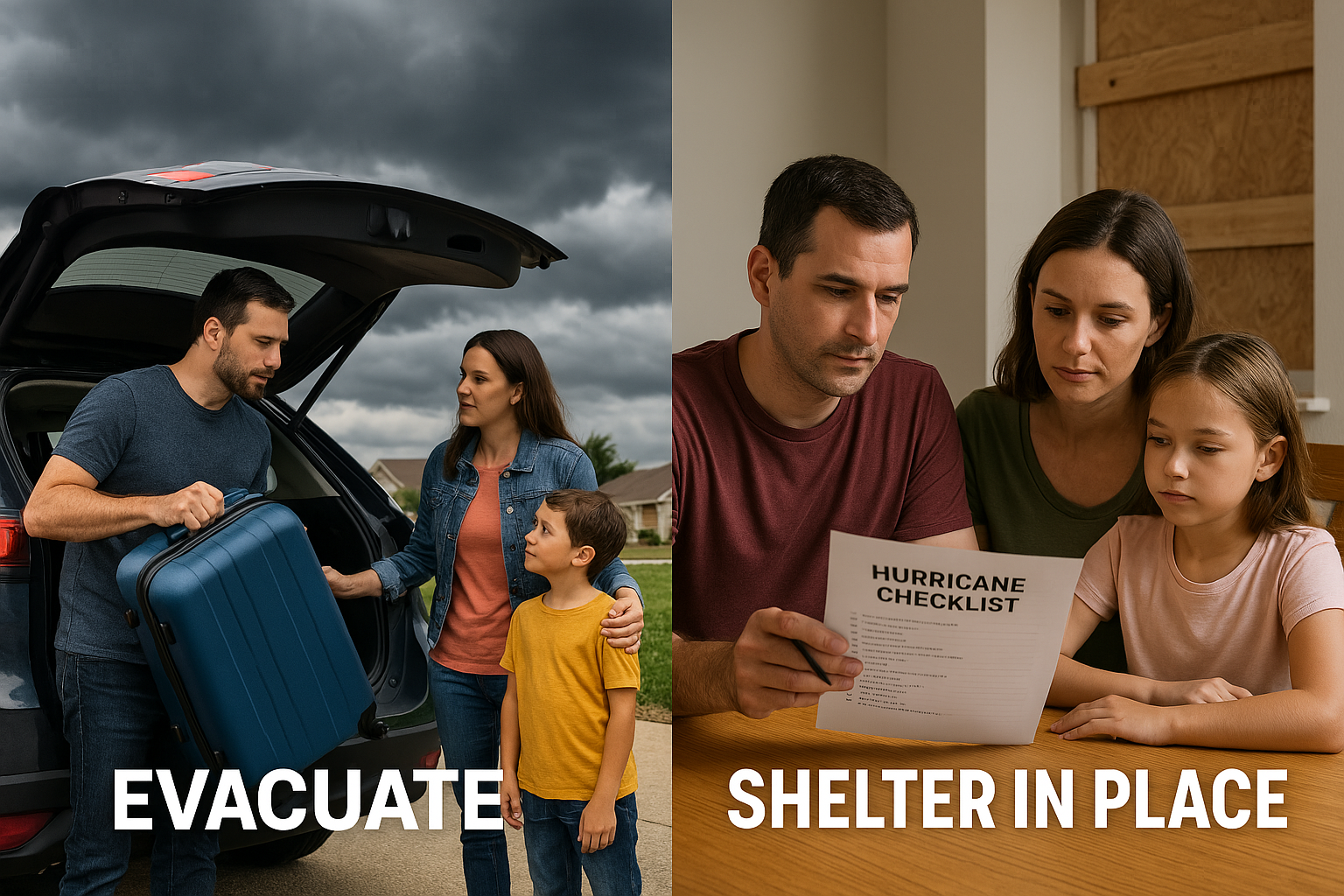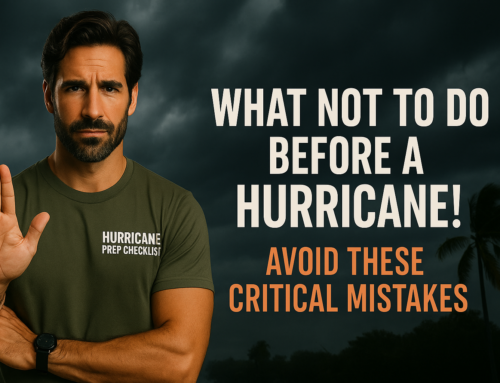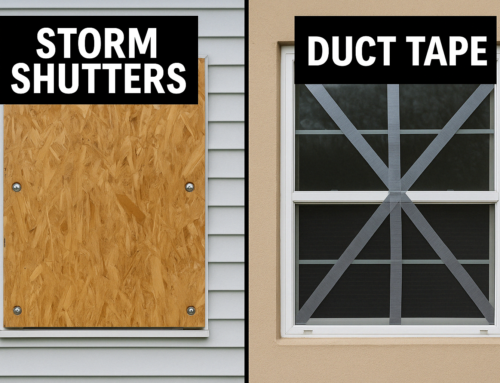When a storm approaches, the question becomes urgent: Should you evacuate or shelter in place? Understanding the right move can protect your life and home. Hurricane safety starts long before landfall. With storms growing stronger each season, early decisions matter more than ever.
Knowing when to leave or stay depends on your location, your home, and your local emergency orders. Many people wait too long to choose. That delay puts families at risk. To help make smart choices, this guide explains what to consider—clearly and simply. For full checklists and expert storm prep tips, Download Now.
Understand Hurricane Safety Before Making a Move
Hurricane safety requires more than just watching the news. It starts with knowing your evacuation zone. Local governments issue evacuation orders based on predicted storm paths and risk levels.
If your zone is under a mandatory evacuation, leave. Don’t hesitate. If you stay, you may face flooding, blocked roads, or no emergency services. People often assume their home can handle the storm. That can be a dangerous mistake.
If no order is given and your home is well-built and outside flood zones, sheltering in place may be an option. You must still prepare with food, water, and backup power. For a complete breakdown of these supplies, Download Now.
When to Evacuate for Hurricane Safety
Deciding when to evacuate is key to smart hurricane preparedness. Authorities may suggest evacuation 48–72 hours before landfall. Follow their guidance. Roads will clog quickly. Gas may run out.
If you live near the coast or in a floodplain, you’re at higher risk. Mobile homes and older buildings often can’t handle hurricane winds. If your home fits these conditions, evacuation is usually the safer choice.
Make a plan now. Know where you will go and how you’ll get there. Bring your go-bag with key supplies. Include documents, medicine, and pet care items. For a full evacuation checklist, Download Now.
You can also use the Red Cross – Find a Shelter tool to locate open shelters near you.
When to Shelter in Place Safely
In some cases, staying home is safe and allowed. You may shelter in place if your area is not under an evacuation order. Your home must be well-built and stocked with supplies. Have enough food, water, batteries, and ways to get updates.
Secure windows and doors. Move to an interior room during the storm. Avoid rooms with glass. Keep a phone charged. If power goes out, rely on a weather radio.
Prepare before the storm hits. You won’t be able to run errands once the wind picks up. Review your hurricane kit often and replace expired items. Our eBook gives you a full supply list to check off. Download Now.
Track storm progress through trusted sources like the National Hurricane Center. Do not rely on social media alone for updates.
The Risks of Choosing Wrong
Knowing whether to evacuate or shelter in place isn’t always easy. But choosing wrong can be costly. Staying in a high-risk area can result in rescue delays—or worse. Leaving when it’s not needed could place strain on shelters and road systems.
You need to base your decision on facts, not fear. Use official alerts. Trust weather experts and local emergency managers. Check updates often. Storm tracks change fast, and so do risk levels.
No storm is worth gambling with your life. Being ready early gives you better options. Our guide makes your choices clear. Download Now and take control of your storm plan today.
Build Confidence With a Clear Hurricane Plan
Whether you evacuate or shelter in place, a solid plan is your best tool. Don’t wait for alerts to get ready. Write out steps for every option. Share the plan with everyone in your household.
Your plan should include evacuation routes, shelter options, emergency contacts, and supply checklists. If you shelter at home, know how to stay safe in place. If you evacuate, plan your destination and what you’ll take.
Use our digital eBook to simplify this. It includes planning templates, expert advice, and printable checklists. Download Now.
For more official hurricane readiness resources, visit FEMA – Hurricane Preparedness.
Don’t Wait to Decide—Act Early
Storms don’t wait. You shouldn’t either. Hurricane safety depends on early action and clear decisions. The best time to prepare is now, not when the storm is on the radar.
Start by knowing your risk zone. Learn your evacuation options. Build your supply kit. Talk to your family. Prepare your home or go-bag today.
The more you do now, the safer you’ll feel later. Don’t leave it to chance. Get ready with confidence. Download Now and prepare to shelter or evacuate the right way.






